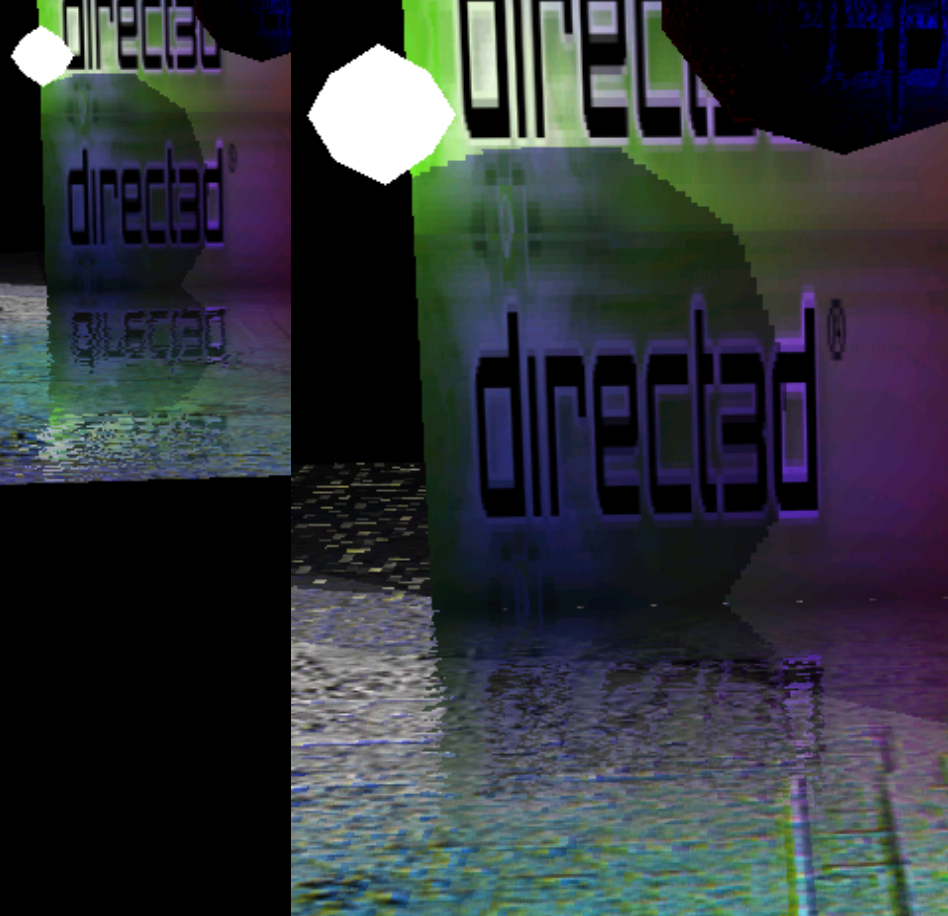With regular raymarching algorithm we can fade the reflected pixel based on the number of iterations used when looping. I can’t use an iteration number when doing both hierarchical z (HiZ) and raymarching loop for refinement as the two loops did not work the same. Using a global iteration value produces incoherent fading.
To obtain a fading aspect that works for both I’m using this : SSRcolor = float4(Color,1-abs(SSray.z-D)*500);
Where color is the color of the scene (multilayer), SSray.z is the depth when the ray hits something in one layer, D is the initial depth from where the ray started. 500 accounts for the depth difference compared to 1. 500 gives good results for my needs but it can be more for more fading or less for less fading.
A problem I have when using an iteration or depth-based fading is that the fading ratio is POV dependent as shown in picture. For iterations I guess you are doing more loop rounds when closer and for Depth-based fading the closer you are the bigger SSray.z-D must be.
Is it possible to make the fading POV independent? Taking the constant 500 as a starting point can we design a formula for it taking into account the distance to POV or something like that.

